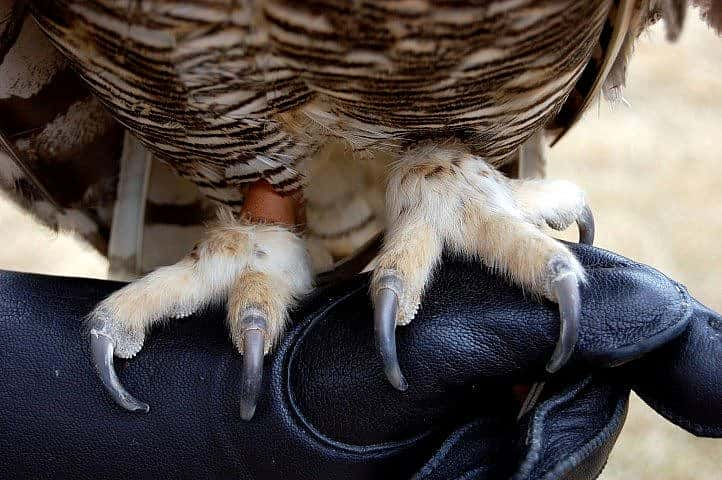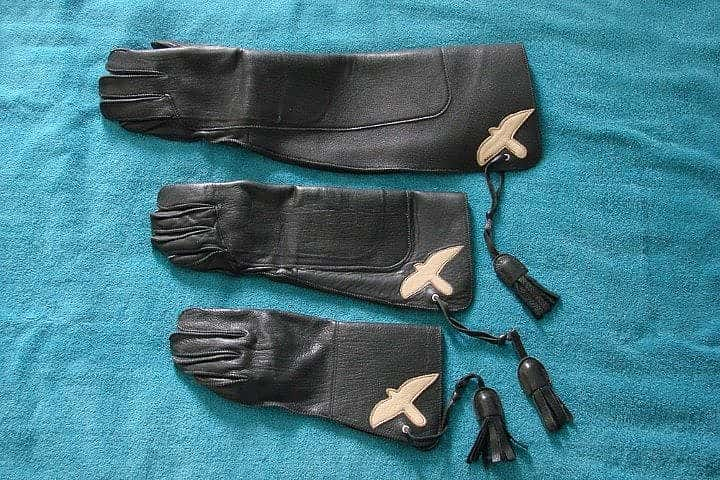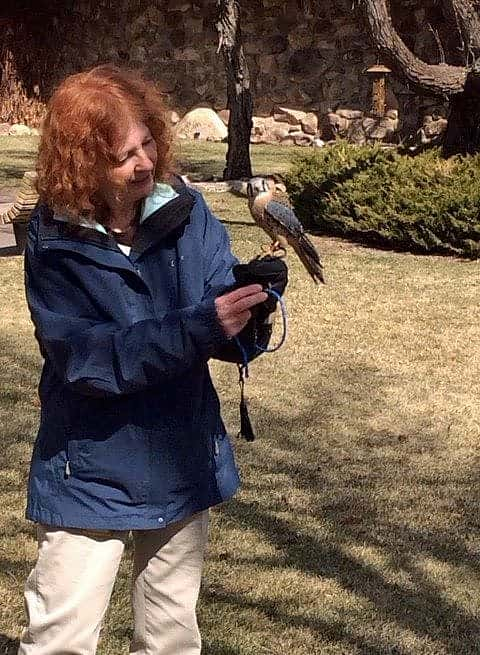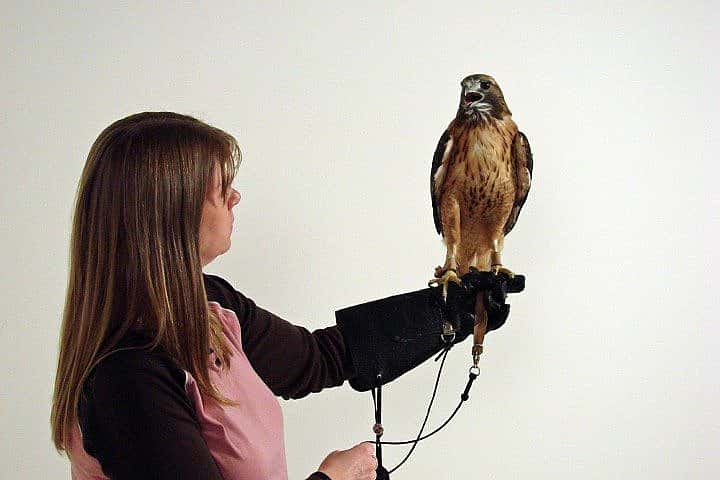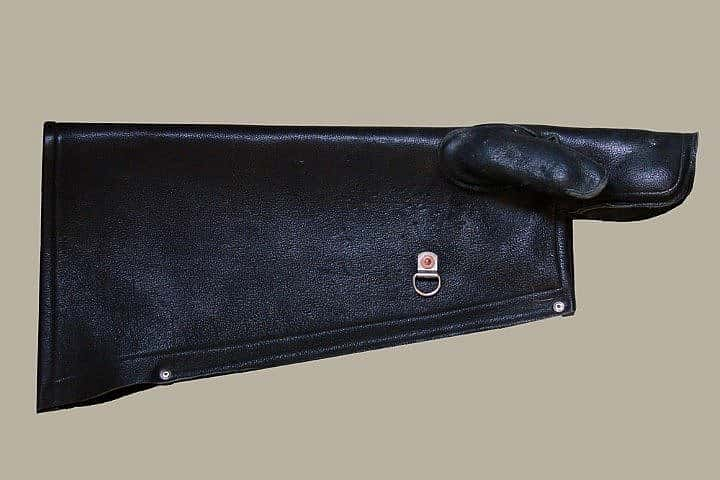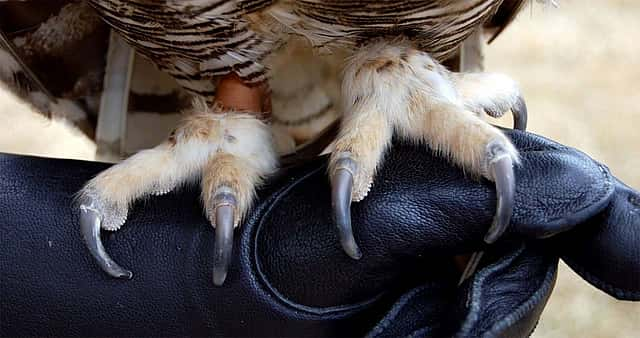
Raptor Gloves: The What and Why
This post is from Anne, the Volunteer. Unfortunately, our blog site is being difficult and it was posted under Melissa’s account. Sorry for any confusion.
Raptor gloves are used by all raptor handlers including falconers, rehabilitators, zoo personnel, and those working in various types of raptor shows. These gloves are used by handlers to turn the arm into a suitable perching surface while protecting the handler from the sharp talons of the bird. Sometimes called gauntlets, falcon gloves, or hawking gloves, these are an important piece of equipment. Raptor gloves are made of strong leather and come in a variety of sizes and thicknesses. The Draper Museum Raptor Experience provides some universal sizes that volunteers may use or we can purchase our own, which is what many of us have done. The advantage of purchasing our own glove is that we can have them custom made to fit our hand. Ours are constructed by “Tradition Gloves” and for our first order we send a tracing of our hand to Tradition along with a palm measurement. Our measurement information is then kept on file so that we can purchase additional gloves in the future if we wish.
The gloves are made of different thicknesses and lengths depending on what type of birds will be handled. It’s important to use the right sized glove and style, as the glove not only protects us, but it is also the gloved hand that we will mainly control the bird with. Each glove has a D-ring where the bird’s leash is tied and an optional tassel which allows you to hang the glove for storage. Gloves can be an expensive piece of equipment. Depending on the maker, they can range from $20 to $200.
The smaller glove that you see in the photo above is used for peregrine and smaller falcons and small owls. This glove covers the hand and wrist and is constructed with a single layer of a lighter hide. This is my favorite glove as it is very comfortable to wear and gives me good hand control. I use it when I am handling Hayabusa, our peregrine falcon, and Salem, our American kestrel.
The medium-sized glove is designed to be used with large owls and hawks, such as our red-tailed hawk and great horned owl. This glove is 15 inches long and comes almost up to my elbow. It is made of a double layer of leather on the cuff, thumb, first three fingers, and the bird perching area. Though not as comfortable to wear as the smaller glove, it can also be used with slightly smaller birds such as our peregrine falcon.
The large glove is good for eagles and large birds with a wide stance, such as vultures. This glove is constructed similarly to the medium sized glove but has triple thickness on the thumb, first finger, and bird perching area. This glove is around 21 inches in length so that it reaches farther up the arm and over the elbow area. I wear this glove when working with Suli, our turkey vulture.
If the large glove is to be used with an eagle, then a leather shield is worn over the glove for further protection from large talons and stronger feet. Our program supplies shields to wear over the large glove.
Like the anklets worn around their legs, the gloves we wear every day are important pieces of equipment for our jobs. When you handle birds that are designed to kill their prey with their feet, the last thing you want is the wrong glove for the job!
Written By
Melissa Hill
While earning her Bachelor's Degree in Wildlife Management at the University of Wyoming, Melissa began volunteering at Laramie Raptor Refuge and was instantly hooked on birds of prey. Since those early days, she has worked with nearly 70 different raptors at four different raptor education groups in three states. She is a former member of the Education Committee for the International Association of Avian Trainers and Educators (IAATE) and a National Association for Interpretation's Certified Interpretive Guide. When she's not "playing with the birds" she enjoys spending time quilting, crocheting, and exploring the Greater Yellowstone Ecosystem with her non-bird family.
